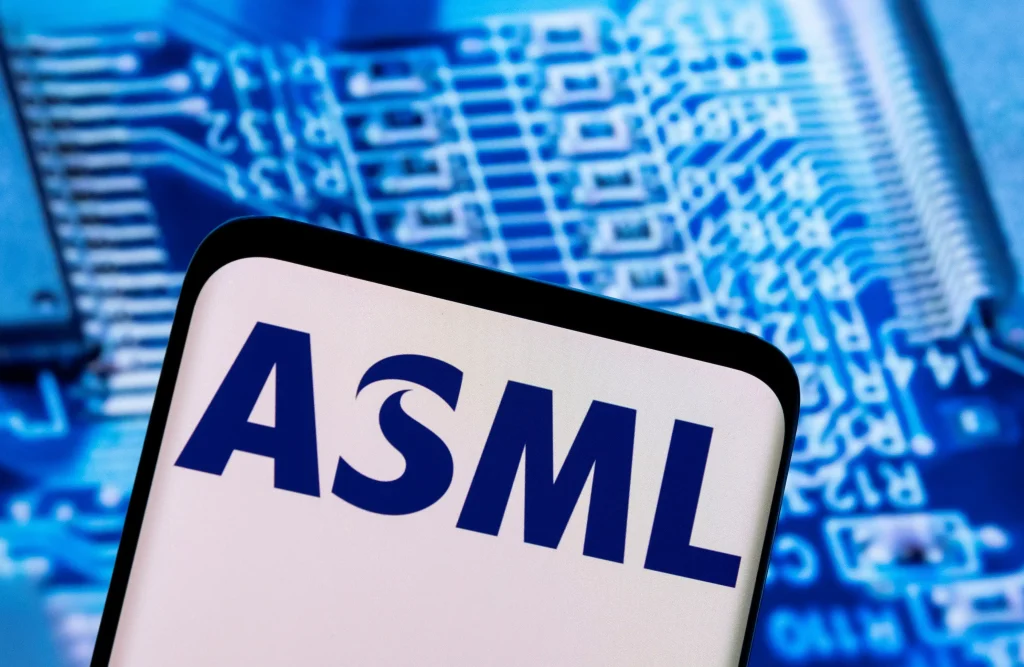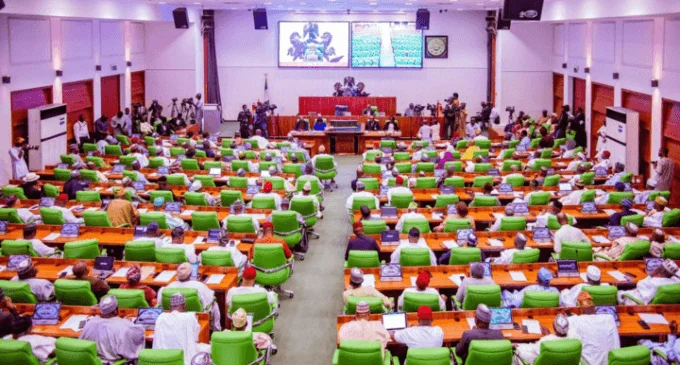ASML Holding NV, the world’s largest supplier of semiconductor manufacturing equipment, has warned that it may not achieve revenue growth in 2026 due to increasing geopolitical and macroeconomic uncertainty — particularly surrounding the impact of proposed U.S. tariffs on European goods.
In a media call on Wednesday, ASML’s Chief Financial Officer, Roger Dassen, said that uncertainty over tariffs is prompting major chipmakers in the United States to delay critical investment decisions. These delays are casting a shadow over the company’s future growth trajectory and rattling investor confidence.
Shares Plunge on Growth Warning
Following the announcement, ASML’s stock dropped as much as 7.8%, heading toward its worst trading day since October. The ripple effect dragged down shares of related European semiconductor firms including ASM International (ASMI), BE Semiconductor Industries (BESI), and Soitec, underscoring the broader market anxiety tied to U.S. trade policy and chip sector dynamics.
High-End Machine Costs Could Spike
One of ASML’s most pressing concerns centers on the financial implications of a proposed 30% tariff the U.S. may impose on European imports. According to Dassen, such a levy could increase the cost of a single high-end lithography machine — ASML’s core product — from €250 million to €325 million.
The potential tariff impact isn’t limited to the final product. ASML often ships components back and forth between the Netherlands and the U.S. during the assembly and testing processes. Each stage could be subject to tariff duties, compounding costs throughout the manufacturing cycle.
Despite these pressures, ASML has reaffirmed its intention to pass on additional costs to customers if tariffs are implemented, though this move could further delay purchasing decisions or prompt clients to reconsider capital expenditures.
“Clarity Is What Customers Are Looking For”
Dassen emphasized that ASML’s customers — many of whom are building new fabrication plants in the U.S. under the CHIPS Act and other government incentives — are demanding policy clarity before they proceed with high-value purchases.
“Clarity is what customers are looking for before they can really finalize their views as to what they’re going to do,” he said.
These delays are particularly worrisome given the complex, long-term nature of ASML’s business model. The company’s advanced extreme ultraviolet (EUV) lithography machines are central to next-generation chip production and often represent the single most expensive investment in a chip fab.
2026 May Break ASML’s 14-Year Growth Streak
ASML CEO Christophe Fouquet, in an internal company interview, acknowledged that the company’s long-running growth streak — uninterrupted since 2012 — may finally come to a halt in 2026.
“While we still prepare for growth in 2026, we cannot confirm it at this stage,” Fouquet said in a statement published on ASML’s website. He further noted that the level of uncertainty has increased, citing both macroeconomic conditions and geopolitical instability, including the ongoing trade tensions between the U.S. and the European Union.
CFO Dassen echoed these concerns, stressing that both the direct and indirect effects of tariffs remain highly unpredictable and could disrupt not only ASML’s revenue model but also its supply chain operations. The company is actively working with partners to explore mitigation strategies.
Analysts Caught Off Guard
Financial analysts had anticipated that ASML’s second-quarter results might provide some clarity or reassurance about the company’s growth outlook, particularly for 2026. However, the company’s admission that it cannot confirm growth expectations has deepened concern across the investment community.
Still, some investors remain optimistic. Han Dieperink, Chief Investment Officer at Aureus, a Netherlands-based investment firm and ASML shareholder, downplayed the risk of a significant downturn. He said the company’s latest quarterly performance pointed to solid underlying demand, despite the short-term geopolitical headwinds.
“I’m not worried about next year,” Dieperink said, “but clearly, the uncertainties around U.S. policy are causing delays in decision-making.”
Broader Implications for the Semiconductor Industry
ASML’s warning comes at a pivotal time for the global semiconductor industry. In recent years, the U.S. has been pushing aggressively to relocate chip manufacturing back to domestic soil, with major players like Intel, TSMC, and Samsung building new facilities in Arizona and other states.
These efforts are supported by substantial subsidies under the CHIPS and Science Act, but companies are increasingly concerned about the cost implications of tariffs, especially if they affect critical equipment sourced from Europe.
If the U.S. proceeds with a 30% tariff, it could disincentivize American firms from buying EU-manufactured chip tools, forcing them to consider alternative suppliers or delay capital spending altogether.
In ASML’s case, this could disrupt not just 2026 revenues but also its long-term equipment delivery pipeline, which is often booked years in advance.
Strategic Response Underway
In response to these challenges, ASML has begun re-evaluating its supply chain strategies, including localized manufacturing and alternative shipping arrangements to reduce tariff exposure. However, such adjustments take time and may not come online quickly enough to offset short-term disruptions.
The company also continues to engage in dialogue with U.S. officials, urging greater transparency and collaboration to ensure that trade measures do not undercut innovation or derail the massive investments underway in chip manufacturing infrastructure.
Final Thoughts
ASML’s cautionary outlook for 2026 serves as a wake-up call for global investors and policymakers alike. With trade tensions escalating and the future of high-tech supply chains increasingly entangled in geopolitical disputes, companies like ASML are facing unprecedented levels of uncertainty — even as demand for advanced chips continues to soar.
Unless tariff policies are clarified and more predictable frameworks are established, the risk of delayed investments and muted growth may persist, potentially threatening the momentum behind the global semiconductor renaissance.
For now, ASML remains committed to growth, innovation, and supply chain resilience — but acknowledges that a flat year in 2026 is no longer off the table.













